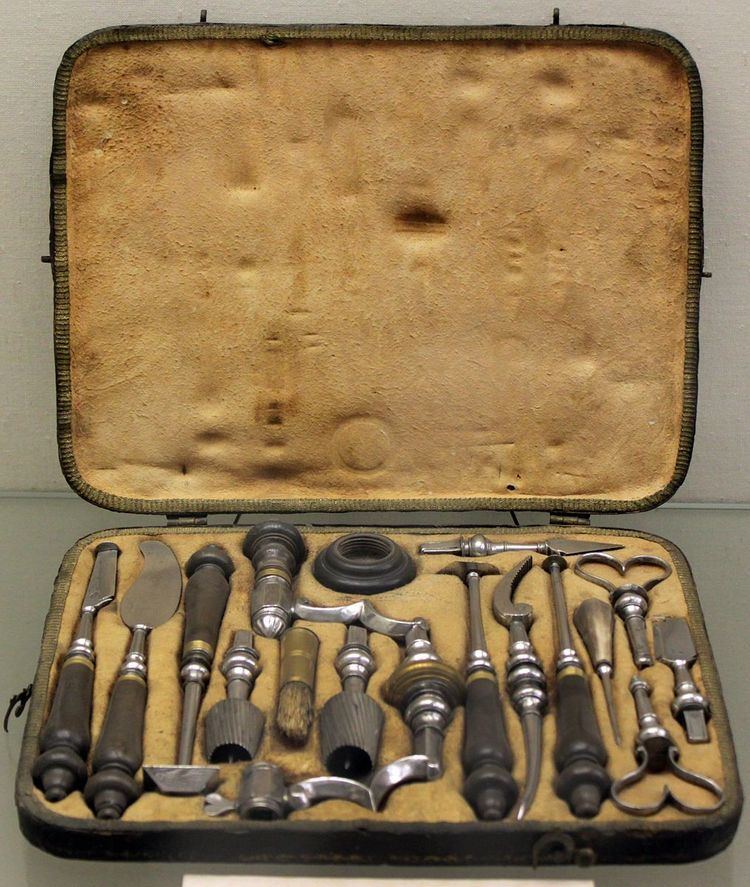 | ||
A craniotome is a tool for drilling simple burr holes (trepanation) or for creating larger openings in the skull (craniotomy). The trepanation tool is generally equipped with a clutch which automatically disengages once it touches softer tissue, thus preventing tears in the dura. For larger openings the craniotome is a surgical instrument that has replaced manually pulled saw wires in craniotomies from the 1980s on. Its working tool tip consists of a spiral blade that is framed by a guard device with an angled cranium guide that rests against the inner layer of the skull bone. The dura guard pushes the dura mater downward while the craniotome is moved forward thus preventing dural tearing.
The first craniotome was designed and created by John H. Bent, a mechanical engineer and owner of Standard Pneumatic Motor Company, under contract with Hall Air Instruments of Santa Barbara, California. When Hall was subsequently acquired by 3M Company (which was then actively developing and marketing surgical instruments), the 3M Craniotome became widely used in neurosurgery, replacing the Gigli saw (manually pulled saw wires) as the primary means of opening the skull for access to the brain for surgical procedures. Bent designed the original Craniotome around a small, lightweight, very high speed (approximately 70,000 rpm) pneumatic turbine motor he had invented for use in industrial wire-wrapping tools and other air-powered hand-held devices.
Craniotomy is distinguished from craniectomy or “osteoclastic craniotomy” in which the skull flap is not immediately replaced.
High-speed craniotomes usually run at 40,000 to 80,000 rpm and have greatly facilitated intracranial approaches in neurosurgery. They are also employed to temporarily remove the vertebral arch in laminotomy.
